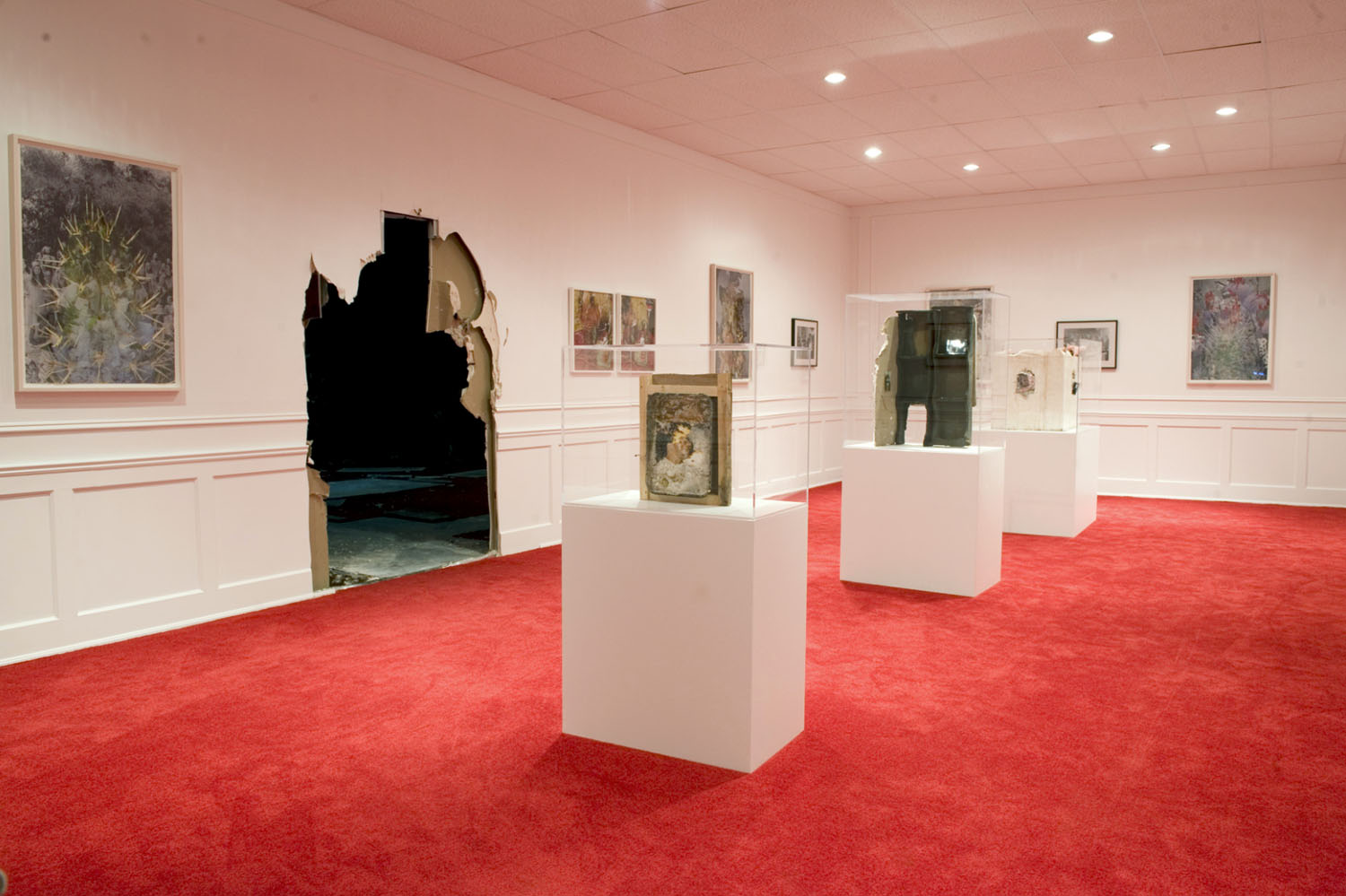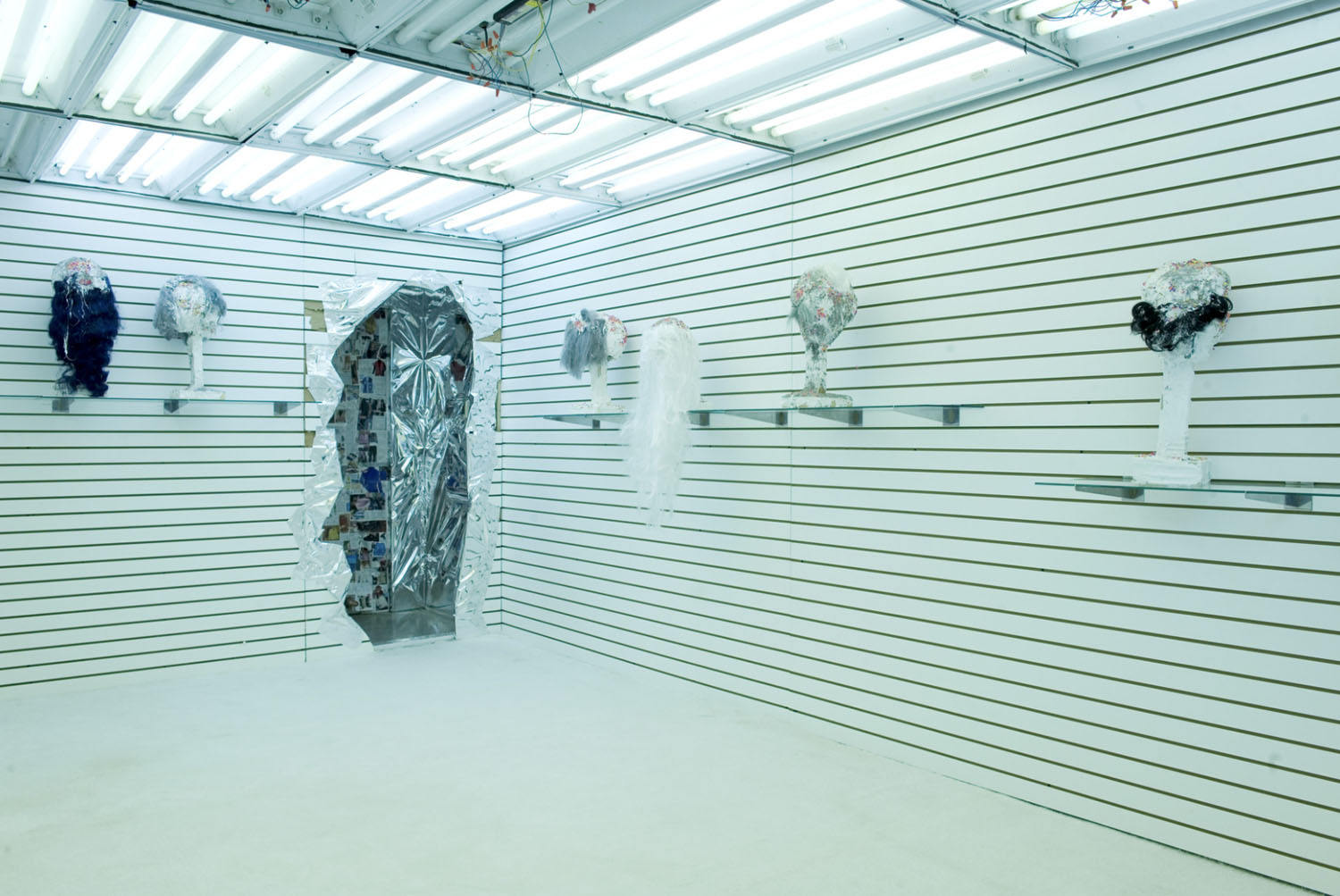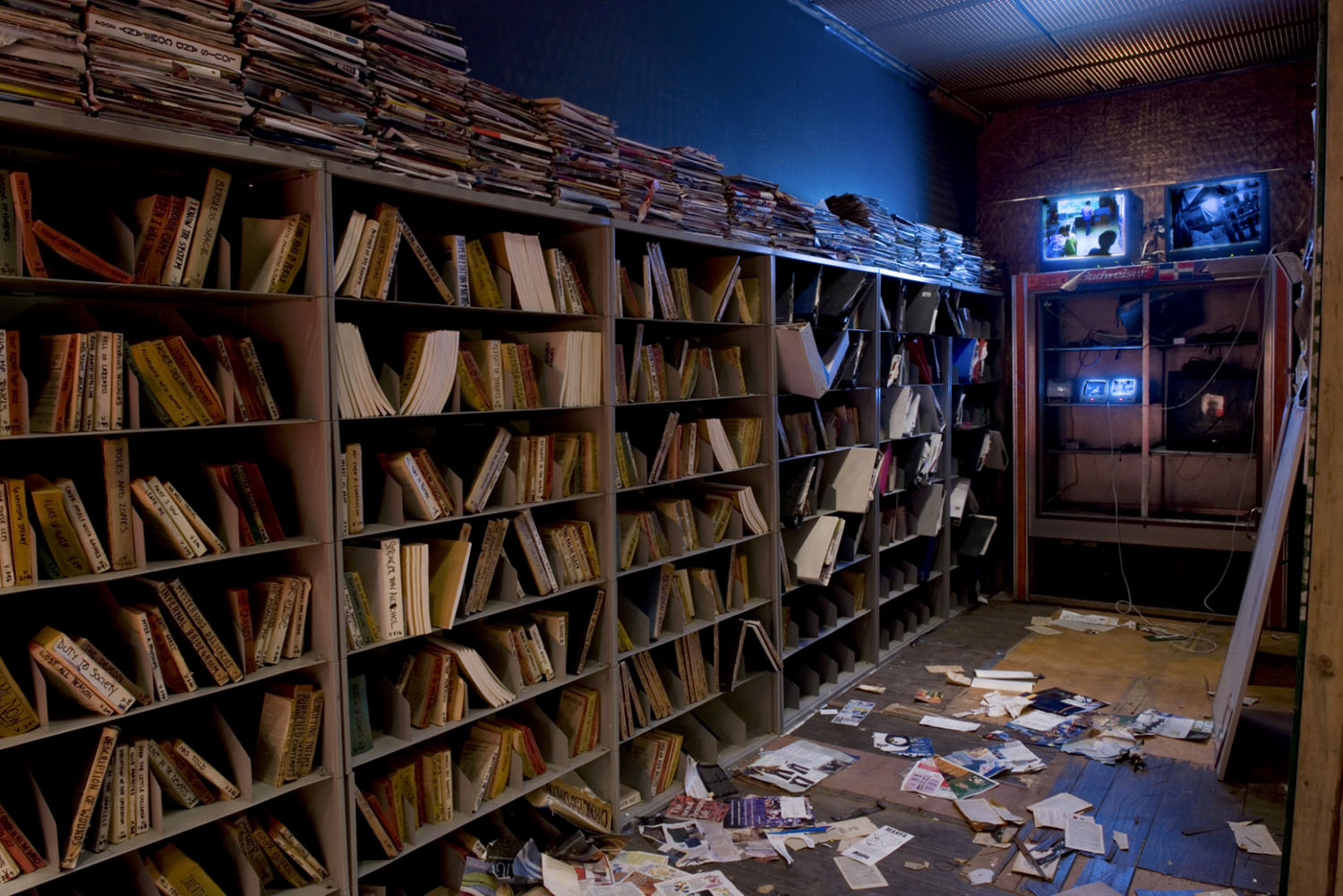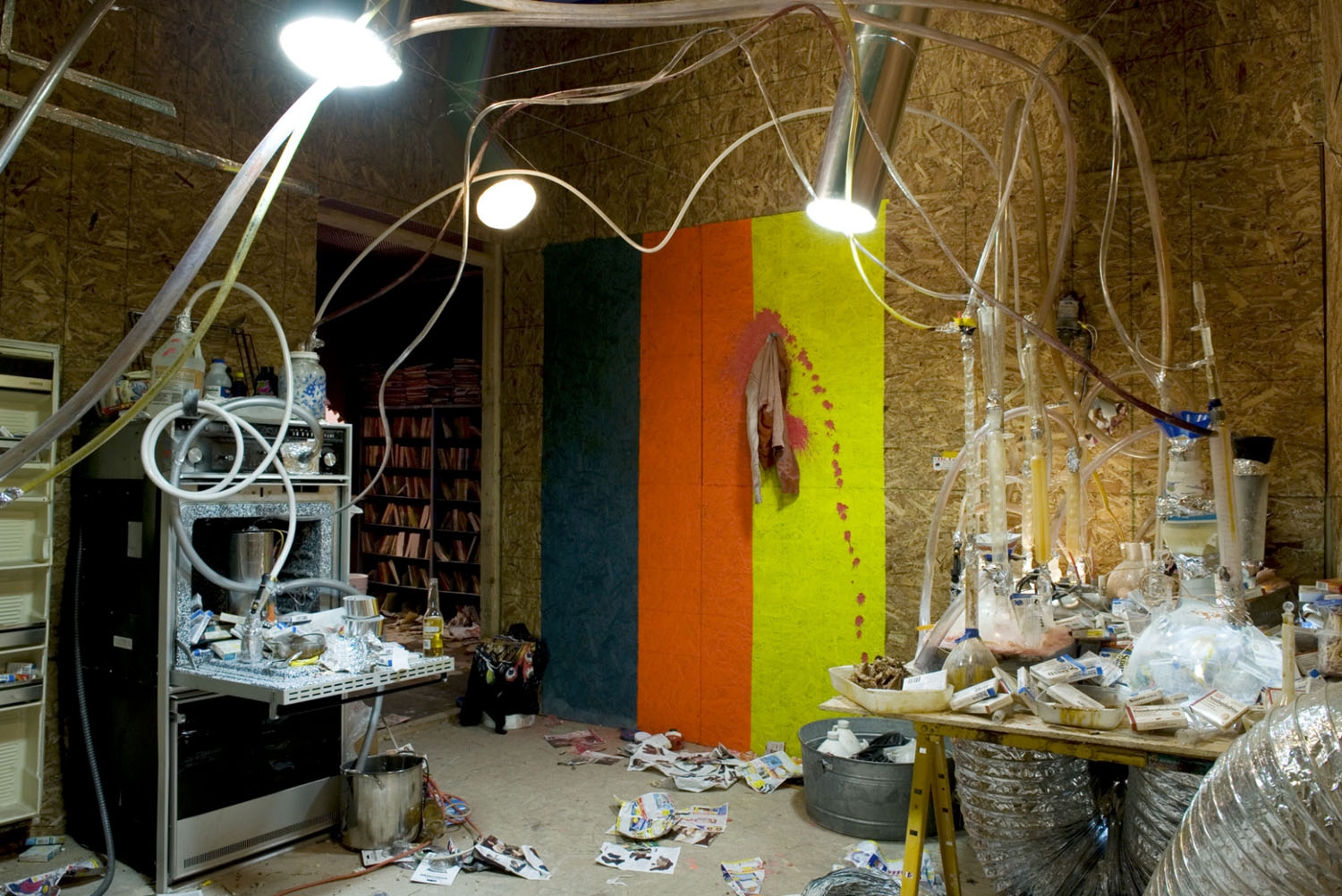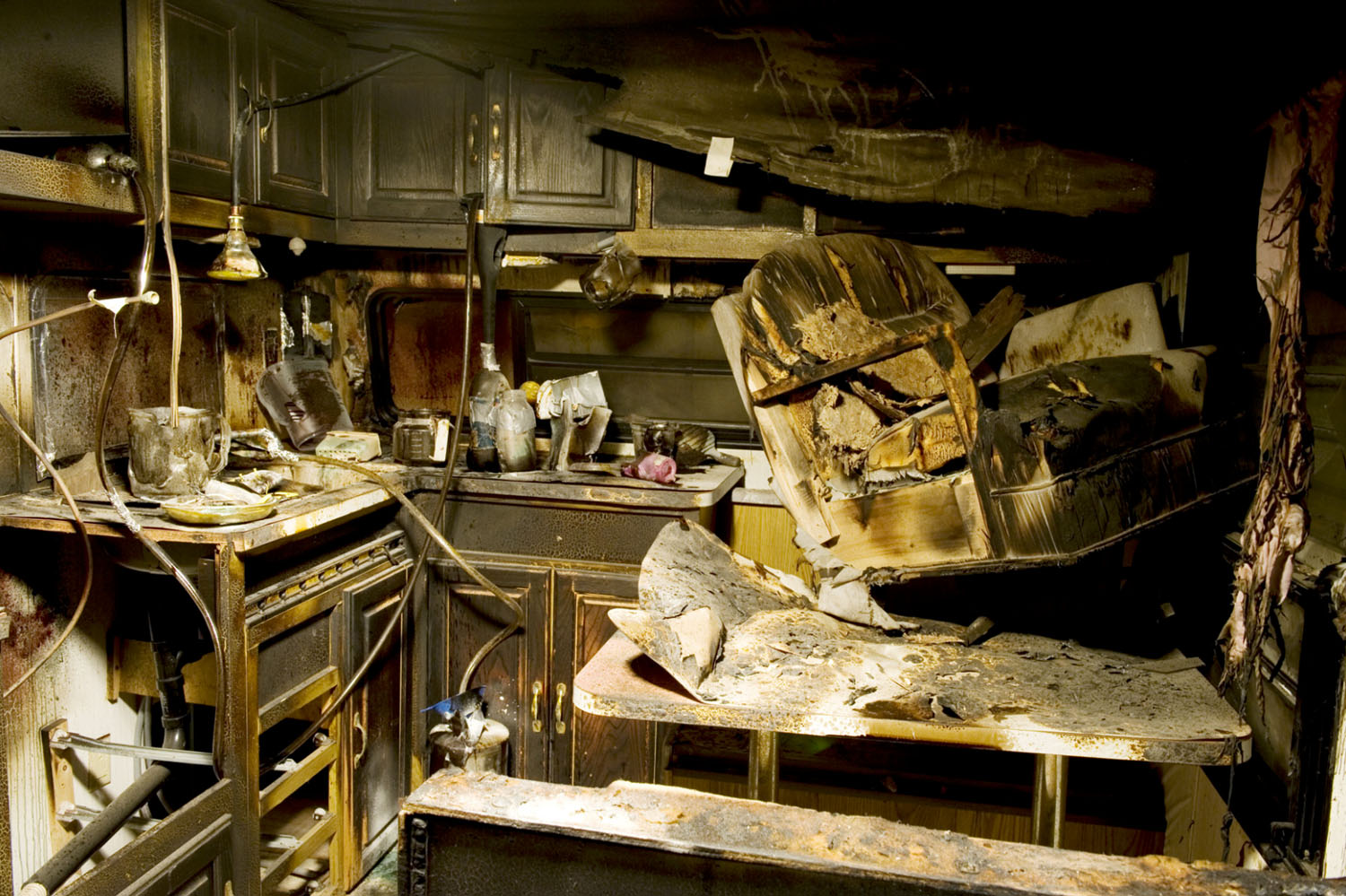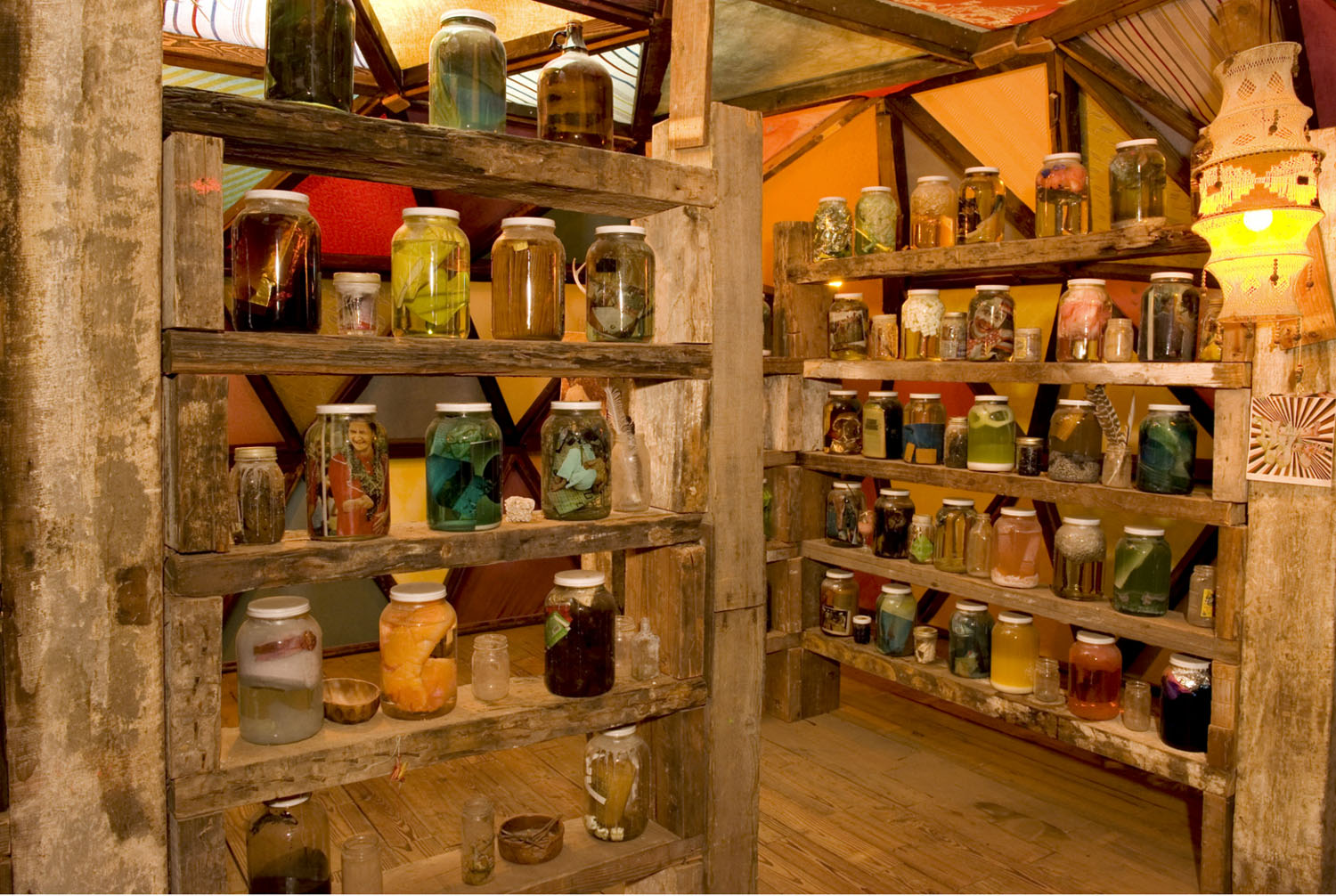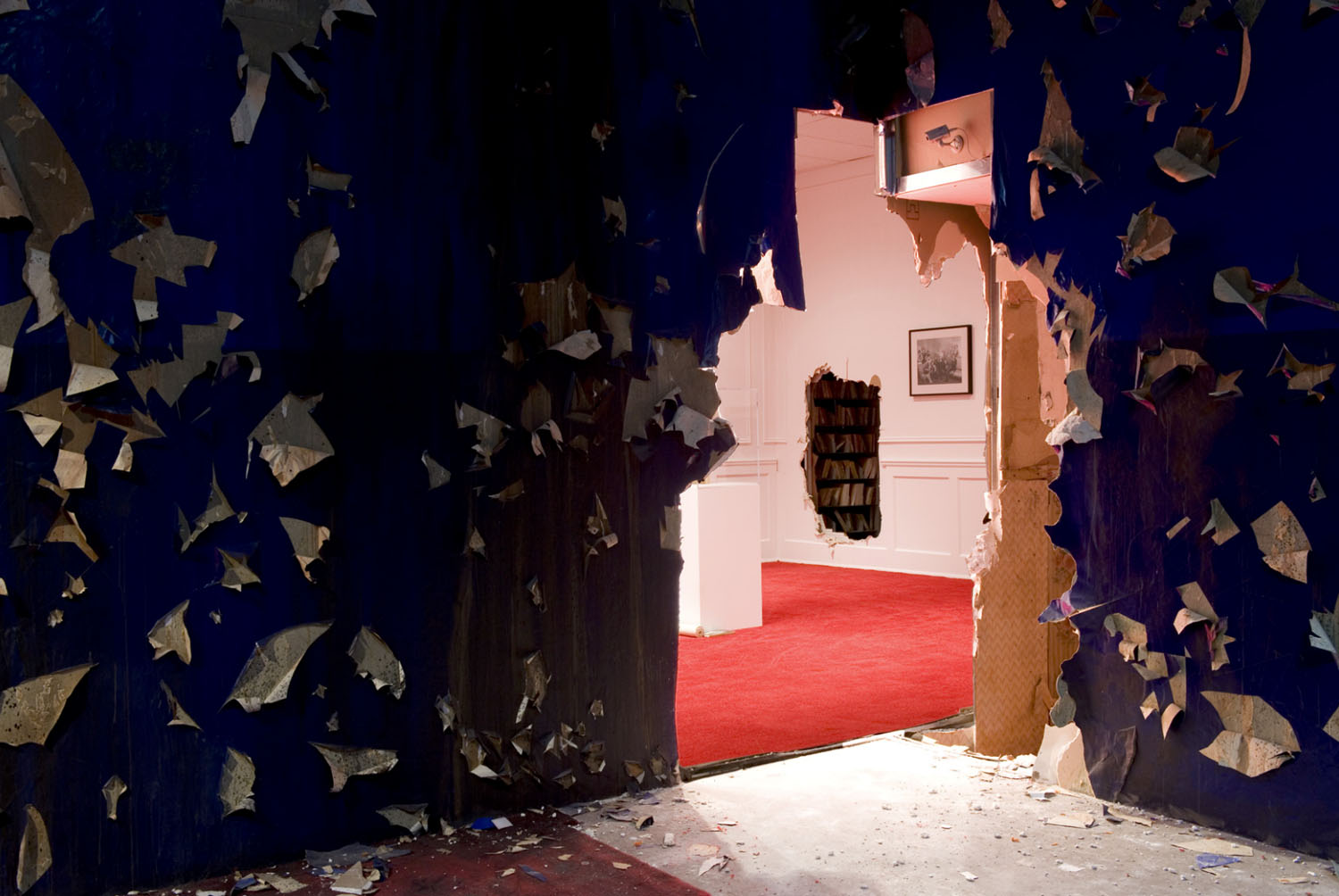BLACK ACID CO-OP
Text by Michael Bullock
Images courtesy of Jeffery Deitch
PIN–UP 7, 2010
Certain drugs are associated with specific environments: marijuana conjures up tents, camps, and communal living; cocaine brings to mind sleek mirrored discos; ecstasy evokes cavernous rave halls; crack is largely synonymous with abandoned inner-city row houses. But what about the current crystal meth epidemic? With “Black Acid Co-op,” artists Justin Lowe and Jonah Freeman took a stab at defining the architectural identity of North American meth addiction, transforming the 3,500-square-foot Deitch Projects’s exhibition space in Wooster Street, New York into an unrecognizable, drug-fueled maze. The artists, who share a Brooklyn studio (a communal compound not unlike their installation, minus the addiction and darkness), see “Black Acid Co-op” as the perfect union of their interests: Lowe makes art that romanticizes the intersection of drugs and communal space, while Freeman creates fantasy architecture installations that float somewhere between fairy tale and urban nightmare.
The Deitch Projectsʼs show is the third installment of a work begun last spring in Marfa, Texas, under the title “Hello Meth Lab in the Sun” (in collaboration with Alexandre Singh). For its New York reincarnation, Freeman and Lowe added the mystery of a fictional cult, the “Black Acid Co-op” (despite its name, the lifeblood here is clearly meth). The multi-level exhibition feels at times like a Hollywood set and at others like a Disney ride through a psychoactive hallucination. But unlike a movie or a theme park, there is no prescribed order to the sequence, and disorientation is part of the experience.
Entering the installation through a small door, one arrives in a moldy, veneer-paneled hallway where a series of charts and diagrams are hung, with what seem to be family photographs tacked onto them. A hole bashed through the wall leads to a retail-type space, brightly lit with fluorescent tubes, where glass shelves at varying heights display creepy faceless heads — happily decomposing with glitter and bright beads — each wearing a messy wig. Is it voodoo? Witchcraft? Satanism? From here the confused visitor proceeds into the labyrinthine heart of the installation, modeled on a small, one-story, wall-to- wall-carpeted house that seems air-lifted from the suburban front lines of the meth epidemic, in somewhere like Missouri. The house includes a soiled and dilapidated living room, a bathroom with rotting fixtures and appliances, and a kitchen space, complete with pots, pans, blenders, funnels hooked up to a
faucet, and a complicated system of tubes flowing in and out of vessels with different chemical ingredients — a meth lab ready to go. Next to it is a duplicate of the same kitchen, but ravaged by a fierce explosion — presumably from a failed meth-making attempt — with everything burnt, melted, and left to decompose. In the next room massive bookcases contain vast archives and video monitoring equipment, old computers, and bulletin boards with more obscure charts and diagrams, like the abandoned headquarters of a paranoid underground organization.
Just when the visitor is fully taken in by this dystopian vision of American dreams gone desperately wrong, there is a sudden rupture: through another cracked hole in the wall one enters a regal, white-walled, red-carpeted gallery space with elaborate moldings. Scribbled canvases line the pristine walls, and glass cases display artifacts like clues from a dead civilization. Other spaces in the installation include a hangar- like, high-ceilinged, Freemason-style meeting room, with an obscure circular symbol on the soiled red carpet, and a subterranean commercial-space-cum-hallucinatory- head-space that is at once Chinatown herb shop and Times Square peep show. The last stop is an upstairs wood cabin with a soothing domed ceiling in many-hued, pastel, fabric triangles that let daylight filter through. A chill-out space that seems to stand for the spiritual side of highs, it looks as though it was designed by a Native American shaman, and is rather at odds with the plastic, corrupted vibe of the rest of the installation. Here guests sit down and relax on pillows while looking at the many shelves stocked with a bottled, pickled archive of American pop-cultural debris.
It’s a fitting end point (and image) for the spatial collage that is “Black Acid Co-op.” Rather than deliver a reality, the installation creates a bleak fiction based on America’s never-ending obsession with drugs of all sorts — combined with dark notions of various failed underground societies — and reads like a cautionary tale to groups that try to live separately from society only to end up self-destructing. At times “Black Acid Co-op”’s entertaining display of addiction’s misfortune can seem a little gimmicky, but it is precisely the installation’s realist voyeurism that makes it so engaging, pulling the visitor through the twisted spectacle of both the highs and the downers with none of the risk, harm, or social stigma. At the end of this drug-addled architectural odyssey, one is left with zero optimism — a feeling heightened by a farewell show at Deitch’s neighboring exhibition space of works by the promising young artist Dash Snow, who died of a heroin overdose, three weeks after “Black Acid Co-op” opened. In one short summer Deitch Projects managed to produce a panoramic view of drug use: the pleasure, ecstasy, freedom, and joy, as well as the excess, sadness, despair, and perverted spectacle of addiction.
